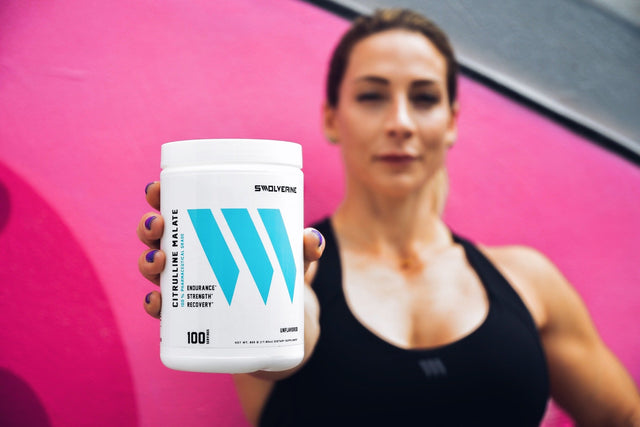Giving birth to a baby is one of the best moments of your life. However, in order to create such a miracle event, a woman's body has to endure the growth and development of her baby in her body, changing the anatomical structure and function altogether. Diastasis Recti, the separation of the abs to give space for a pregnancy, Is a common condition that is rarely talked about. It can leave a woman stopped in her tracks wondering 'what happened to my body?'. If your stomach bulges or cones when you cough, sneeze or brace your core, you may have diastasis recti.
Because of the whirlwind experience that we call the postpartum period, many women don't even realize that they have diastasis recti. If you do have it, it can be immensely discouraging and even embarrassing, leaving you to think that you're never going to be the same again. The good news? Just about every woman who gets pregnant has some degree of Diastasis recti! You're not alone and there are things that we're going to teach you that you can do to improve your health, wellness, and physique.
What Is Diastasis Recti?
"Diastasis" means separation. "Recti" refers to your ab muscles called the "rectus abdominis." Diastasis Recti is a common condition, particularly in women during the postpartum period. In fact, it's estimated that 1 in every 2 women (that's 50% or more!) experience serious separation in the abdominals. The separation is essential to making room in the abdominal cavity of a woman's body so that the baby has room to grow. While the body makes room, it not only spaces out the abdominal muscles, stretching the linea alba, but it also pushes other organs out of the way like the lungs, stomach, spleen, bladder, and so on.
Unfortunately, abdominal separation can make it harder for women to build or strengthen their core due to the separation of the right and left side of the rectus abdominus muscles. Diastasis Recti is the result of those abdominal muscles failing to heal and return to their original placement, leaving a gap in the center of the stomach resulting in the appearance of a “pooch.”[R]
Diastasis Recti It is most common in older women, women who have had many pregnancies, or women who have carried multiple babies. About three-fourths of women who have Diastasis recti, experience it around six months postpartum. It can also be present in men with larger guts.
While the best method to avoid complete separation and unwanted lasting changes in the abdominal area, it's recommended that strength is built in this area prior to pregnancy in order to give the body the best ability to resist the over-separation. However, there is nothing bad or wrong about separation or Diastasis Recti, and this is important to note. You had a baby, after all!
RECOMMENDED ARTICLE: How To Accept Your Body When You Hate It
How Do I Know If I have Diastasis Recti?
If you are wondering whether or not you have diastasis recti, luckily it is a condition that you can easily test for at home!
- Start lying on your back with your knees bent and soles of your feet on the floor
- Place the fingers of your left hand just above your belly button with your fingertips facing you
- Place your right hand on your thigh.
- Inhale fully than slowly exhale.
- As you are exhaling, lift your head and shoulders off the floor, slide your right hand down your thigh, and contract your abdominal muscles.
- Use your left fingers to decipher the width.
If the gap is less than 2 fingers wide, little to no diastasis recti is present. However, if the gap is 3-5 fingers wide, there is diastasis recti present and definitely requires specialized physical therapy. [R]

How Long Does Diastasis Recti Take To Heal
There is no one-size-fits-all timeline with the healing of Diastasis Recti. It’s certainly not an overnight process and each woman’s healing of the weakened connective tissue is an individual approach. That being said, it is never too late to close a diastasis on anyone at any time.
How long does it take to fully close the gap? It depends on the commitment, patience, and consistency that you have to the process of healing. In general, it can take 6 weeks and up to a year, but the benefits, confidence, and reclamation of your body is so worth it.
RELATED ARTICLE: How To Overcome Emotional Eating
Ab Exercises And Diastasis Recti
Being informed about the impact of exercise on diastasis recti and applying it safely can be greatly beneficial to your core. The overall goal of exercising with diastasis recti is to strengthen the linea alba and improve overall stability in the rectus abdominal muscles. Core stability exercises can provide more core strength and less intra-abdominal pressure, proving to be a more beneficial and overall safer practice than sit-ups or crunches. [R]
While exercising, it is incredibly important that you create mindfulness and awareness of how the movement is making you feel. If there is pain or discomfort, discontinue the movement and find another variation that is not painful. If the pain or discomfort continues, contact your doctor.
RECOMMENDED ARTICLE: Urinary Incontinence In Female Athletes

Healing Diastasis Recti: Core Exercises
As you attempt each movement, stay mindful of your rib cage, spinal position, and the condition of your abdomen. If your stomach is coning, that can be an obvious indication of abdominal separation and possibly more severe diastasis recti that may require more targeted physical therapy.
Healing Tips:
- Use proper form with basic daily functions
- Use good form when squatting or standing
- Keep your core engaged while standing, moving, and sitting
If your rib cage is flaring, the spine is arching, or pelvic bones are “tipping back,” discontinue and reengage into the position. If you cannot keep your ribcage, spine, or pelvis in place, assume an easier modification of the exercise or complete fewer repetitions.
RELATED ARTICLE: 4 Effective Postpartum Core Stability & Strengthening Exercises
How To Fix Diastasis Recti
Luckily, there are a variety of options when it comes to treating and recovering from diastasis recti. Remember that everyone is different, and all of these options are up to your own interpretation; some of these may be more helpful for some more than others.
1. BREATHING AND CORE STABILITY EXERCISES
For women with a minor case of diastasis recti, core stability exercises that are safely performed throughout pregnancy and in the postpartum period can be greatly beneficial to your healing.
- Pelvic Tilts
- Leg Extensions
- Clams or Side Knee Drops
- Lying March
- Bird Dog
- Dead Bug
- Overhead Lying Reach
- Glute Bridge & Variations
- Lying Heel Slides
Learning to breathe properly during exercise and during the core stability movements is a practiced skill, often taught and learned in physical therapy, that will assist your recovery.
RELATED ARTICLE The Quick And Easy Guide To Breathing During Exercise
2. The Tupler Technique®
3. PHYSICAL THERAPY
With moderate to more severe cases of diastasis recti, intensive abdominal and pelvic floor physical therapy is recommended and encouraged. If consistent and dedicated to physical therapy, the chances of a full recovery are very good.
4. SURGERY
This option is usually only for women who have a severe case of Diastasis Recti. Performed by plastic surgeons, it is usually treated as a tummy tuck and is considered the absolute last resort. If surgery is decided upon or absolutely necessary for healing, women are to be completely positive that they are finished having children.
Exercises to Avoid With Diastasis Recti
While it may seem like a nice idea to hop right into a full-blown ab circuit, if your core is weak and you still have a 2-3 finger-width separation within your abs, we recommend avoiding the following exercises:
- Pushups
- Planks
- Any type of forwarding crunch
- Pulling the shoulders off the ground (i.e. lying toe touches)
- Mountain climbers
- Pilates 100’s
- Downward dog
- Woodcutters, Russian twists, v-ups, or any other twisting/jack-knifing
- Stability ball exercises (when your back is on the ball)
- Burpees into a plank or to the ground
RELATED ARTICLE: 7 Signs & Symptoms of Low Testosterone In Women
Collagen Supplement For Diastasis Recti
Besides recognizing the importance of and safely working on your core stability in the antepartum and postpartum periods, there is another way to assist and guide your body through the healing process as it recovers from Diastasis Recti.
Throughout pregnancy, collagen connective tissue in the linea alba thins and separates as the abdomen expands. Collagen, primarily types I and III, have the role to provide support and resistance for the abdominal wall.
RELATED ARTICLE: The Best Vitamins For Women
There is a direct correlation to the importance of higher type I and type III collagen levels in the body and the ability for your abdominal structure, especially your rectus abdominus muscle and connective linea alba tissue, to fully and sufficiently repair itself. [R]
Type I Collagen:
Type I Collagen is the most abundant form of collagen in the human body as it largely makes up tendons and mature scar tissue and provides resistance to pressure and stress on tendons applied by force within the body – like a growing abdomen in pregnancy.
Type III Collagen:
Type III collagen is the type that vitally provides structure to the expandable structures in your body and higher Type III levels are usually found during the early stages of wound repair. [R]
Both Type I and Type III of bovine collagen contain 18 amino acids, particularly glycine, proline, and hydroxyproline, which are the vital building blocks for ligaments, tendons, and supporting the inflammatory process as well as an immune response in the body.
Looking for a collagen powder that you can add to virtually anything to help increase the healing process of Diastasis Recti? Swolverine’s Collagen Protein contains Type I and Type III bovine from grass-fed pasture-raised cows.
RELATED ARTICLE The Ultimate Guide To Collagen
Diastasis Recti: Takeaway
Diastasis Recti is a relatively common condition, that usually affects women up to six months postpartum. If you feel like you have Diastasis Recti consult your physician and pursue physical therapy. Incorporate simple, yet effective core stregth building exercises and remember - you're not alone and Diastasis doesn't have to be permanent! Supplementing with Collagen protein can also help connective tissue in your abdominal muscles to rebuild and repair themselves.
Want To Fix Your Diastasis Recti?

SWOLVERINE IS AN ENDURANCE ATHLETE AND ACTIVE LIFESTYLE BRAND. MADE FOR THE ELITE ATHLETE, AND THE STRONG-WILLED OUR PRODUCTS WERE DESIGNED TO FUEL YOUR ATHLETIC PERFORMANCE. WE PERFORM WHEN YOU PERFORM.
We believe that everyone can optimize not only their athletic performance but their human potential. The way we believe we can optimize performance is through transparency, clinically effective doses, and clinically proven ingredients with evidence-based outcomes. We provide the nutrients you need to power your active lifestyle.







